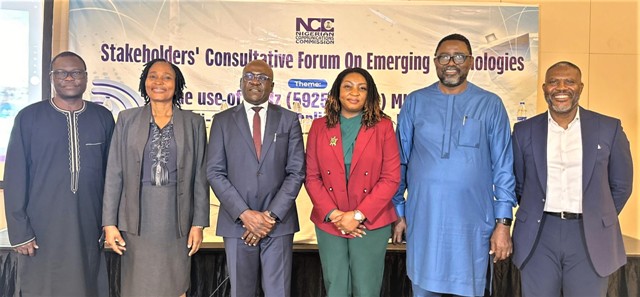NCC tasks stakeholders on 6GHz for Wi-Fi – 6 and International Mobile Telecommunications

However, the 5GHz and 2.4GHz that are being used for Wi-Fi (Wi-Fi 5) at the moment are becoming overwhelmed due to an increase in demand for capacity. It is, therefore, imperative to identify other frequency bands to complement the 5GHz and 2.4GHz
Emmanuel Ukudolo I Friday, September 20, 2024
LAGOS, Nigeria – The Nigerian Telecommunications Commission, NCC has challenged stakeholders on the use of 6 Gigahertz Spectrum 6GHz for Wi-Fi-6 and International Mobile Telecommunications. The 6GHz delivers up to 2 gigabits per second unlike the 5GHz, which delivers only 1 gigabit per second.
Executive Vice Chairman, EVC and Chief Executive Officer, CEO of the commission, Dr. Aminu Maida who gave the challenge at the Annual Stakeholders’ Consultative Forum on Emerging Technologies in Lagos said the agency threw the challenge in line with the Commission’s institutionalized policy of participatory regulation and the practice of industry-wide consultations in conducting its regulatory functions hence the need to elicit comments and inputs on the use of the 6GHz for Wi-Fi – 6 and International Mobile Telecommunications (MT).
Maida who spoke through Executive Commissioner, Technical Services, NCC, Engr. Abraham Oshadami explained that in line with global best practices, the commission believes that its actions must be guided by decisions that take into cognizance the inputs from all stakeholders in the industry as Nigeria prepares to join the league of countries already utilizing part of the 6GHz band for Wi-Fi -6 applications.
According to him, the 6GHz band, spanning 5925 MHz to 7125 MHz, offers a substantial increase in available spectrum, which is crucial for supporting the growing demand for high-speed internet and advanced applications Wi-Fi , which play crucial role in the distribution of fixed broadband connectivity in homes, offices, and various other environments.
Maida said that while the vast majority of home internet traffic is connected to the end-user through Wi-Fi, in enterprise settings, Wi-Fi is essential for handling large amounts of data and simultaneously connecting large numbers of devices with improved reliability, higher data throughput, and lower latencies.
However, he said the 5GHz and 2.4GHz that are being used for Wi-Fi (Wi-Fi 5) at the moment are becoming overwhelmed due to an increase in demand for capacity hence the imperative to identify other frequency bands to complement the 5GHz and 2.4GHz.
He noted that the recently concluded 2023 World Radiocommunications Conference (WRC-23) allocated the 6GHz band for Wi-Fi and IMT applications with different recommendations on how to use the band. This, he said was the outcome of a long study cycle process leading to the decision at the WRC-2023 in Dubai, United Arab Emirates.

